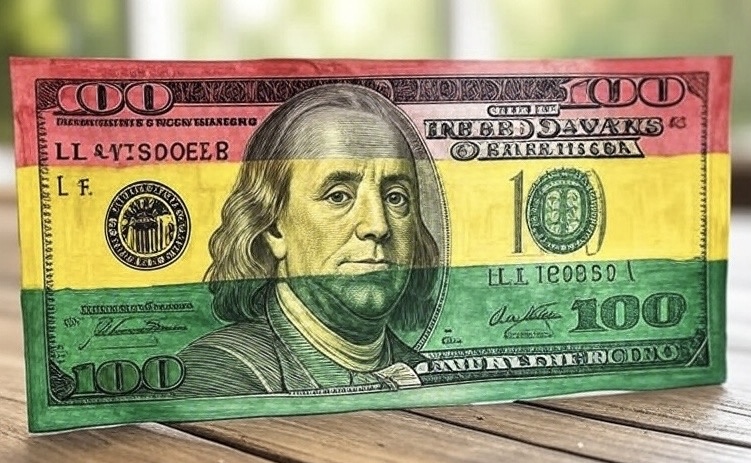Bolivia Can and Must Dollarize This Way

Dollarizing Bolivia is neither a technocratic fantasy nor an academic abstraction reserved for debates among economists. It is, rather, the logical and moral consequence of an economy that, despite the interventionist delusions of political power, is already de facto dollarized. The country does not have a genuine national currency—not in economic, legal, or moral terms. What it has is a state artifact—the boliviano—artificially propped up through rigid exchange controls, captured financial structures, and increasingly unsustainable financial repression. In other words, the boliviano is a monetary zombie: it moves because it’s being carried, but it’s dead.
Dollarization requires neither the IMF’s permission, the Central Bank’s blessing, nor a civil war. It demands political will, conceptual clarity, and respect for property rights. Bolivia does not have a forced boliviano currency; it is already a bimonetary economy. Any citizen can legally enter contracts in dollars, and dollars already circulate widely in commerce, informal savings, remittances, and cross-border trade. The first step toward authentic dollarization, therefore, is not to create something new but to recognize what already exists.
A truly reformist government could, through a simple supreme decree—not a constitutional reform or a 300-article law—officially recognize the dollar as the legal tender currency. There’s no need to ban the boliviano or forcibly withdraw it from circulation: it’s enough for the State to accept dollars for tax payments, execute contracts in dollars, and guarantee their use in commerce and public finances without restrictions. The economy will dollarize itself because the incentives and trust will align with a hard currency, not painted paper.
Moreover, this government can and must recognize not only the dollar but any asset that contracting parties deem suitable for exchanging goods, services, or fulfilling commitments. Whether they choose euros, Swiss francs, Bitcoin, Ether, stablecoins, chocolates, corn, slippers, or precious stones, let them. This is the essence of respecting property rights in the monetary and commercial sphere and upholding contractual freedom. Monetary intervention is a sophisticated form of expropriation.
That said, dollarizing does not mean importing the same disease we aim to cure under a different name. For dollarization to be credible, irreversible, and functional, it is essential to prohibit any government intervention in determining interest rates—whether for loans, reference rates, or interbank rates—under penalty of criminal sanctions. If the credit market remains manipulated, the new system will merely be a dressed-up version of the old one, masquerading as modernity.
In this new framework, commercial banks must convert all their accounting balances to the exchange rate determined by the market—not the State—within a maximum of 60 days (or even one, if they choose). Each bank, in transparent coordination with its clients and shareholders, can estimate a reasonable conversion exchange rate using the average market value over a set period, without impositions or centralism. There’s no need for an organic financial system law or a thousand-page regulation: only the will to break with the model that impoverishes and punishes savings.
And what about the boliviano currency in circulation? Where are the dollars to replace it? Here lies one of the most inconvenient truths for statist technocrats and the legion of Keynesian and monetarist theorists: not a single dollar from the Central Bank or a line of credit from the IMF is needed to dollarize. The Bolivian public, which no longer trusts its currency, has saved—whether in pockets, mattresses, safety deposit boxes, or foreign accounts—approximately $10 billion. This is more than double the roughly $4.8 billion needed to replace all cash in circulation (estimated at Bs. 72 billion at an exchange rate of Bs. 15 per dollar). The people already have the dollars. They’re just waiting for a signal of confidence to redeposit them in banks.
Here’s what’s crucial for ensuring that confidence: once the national monetary base is eliminated, the need for legal reserve requirements also disappears. Deposits will no longer have to be sent to the Central Bank as a guarantee for unbacked money. This means banks will once again become custodians of savings, not fiscal agents of the government. The Central Bank, freed from the temptation to print paper to finance public spending, can close with dignity… or become a museum of monetary failure.
Dollarization is not a magical or immediate solution, but it is an essential step toward recovering individual sovereignty, savings, and confidence in the economy. It’s not about adopting a foreign flag but about burying a model that has condemned the country to stagnation, informality, and looting disguised as monetary policy. Dollarizing is recognizing that people know better than the State how to protect their wealth.
And most importantly: it is the most subversive act of economic freedom Bolivia can grant itself.
Originally published here on July 20th, 2025.








